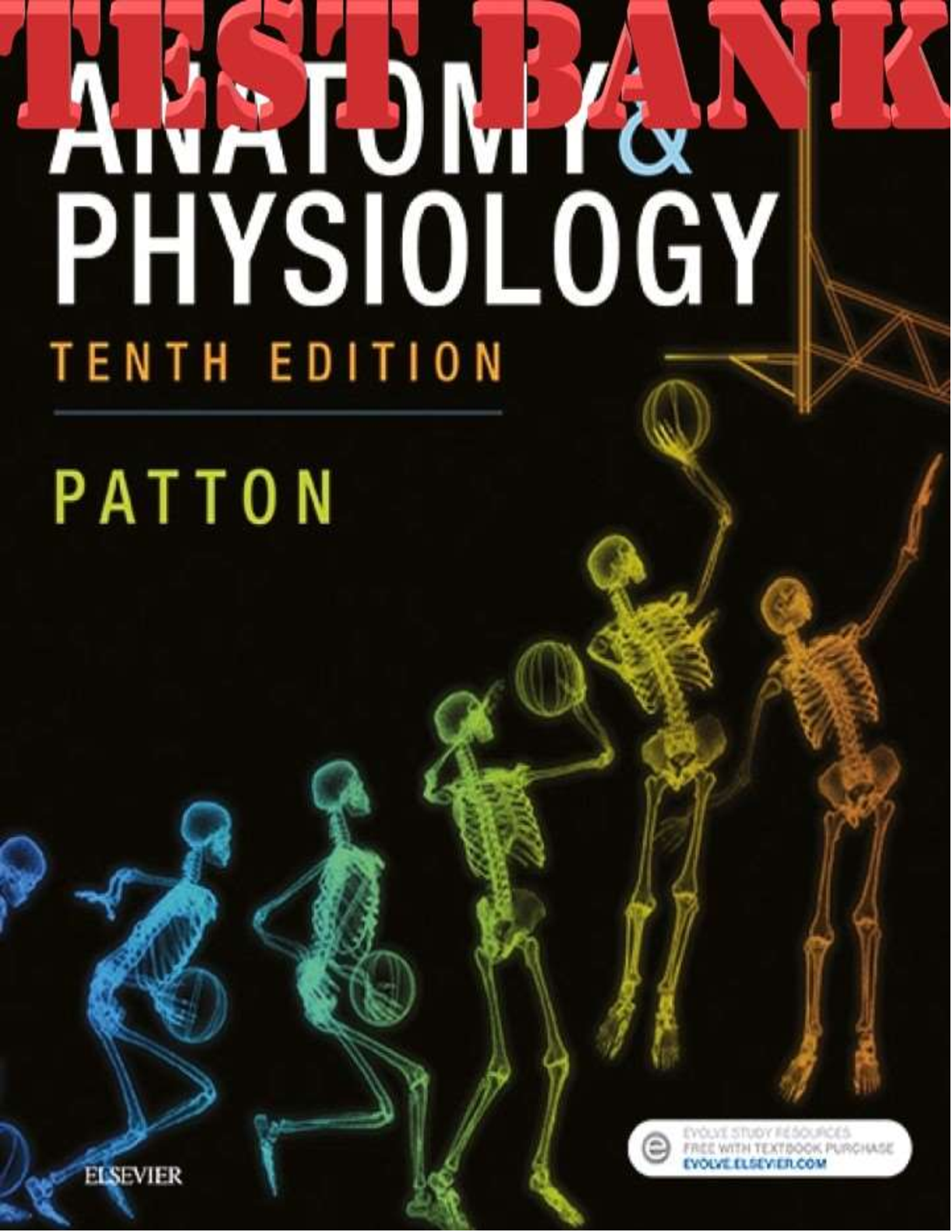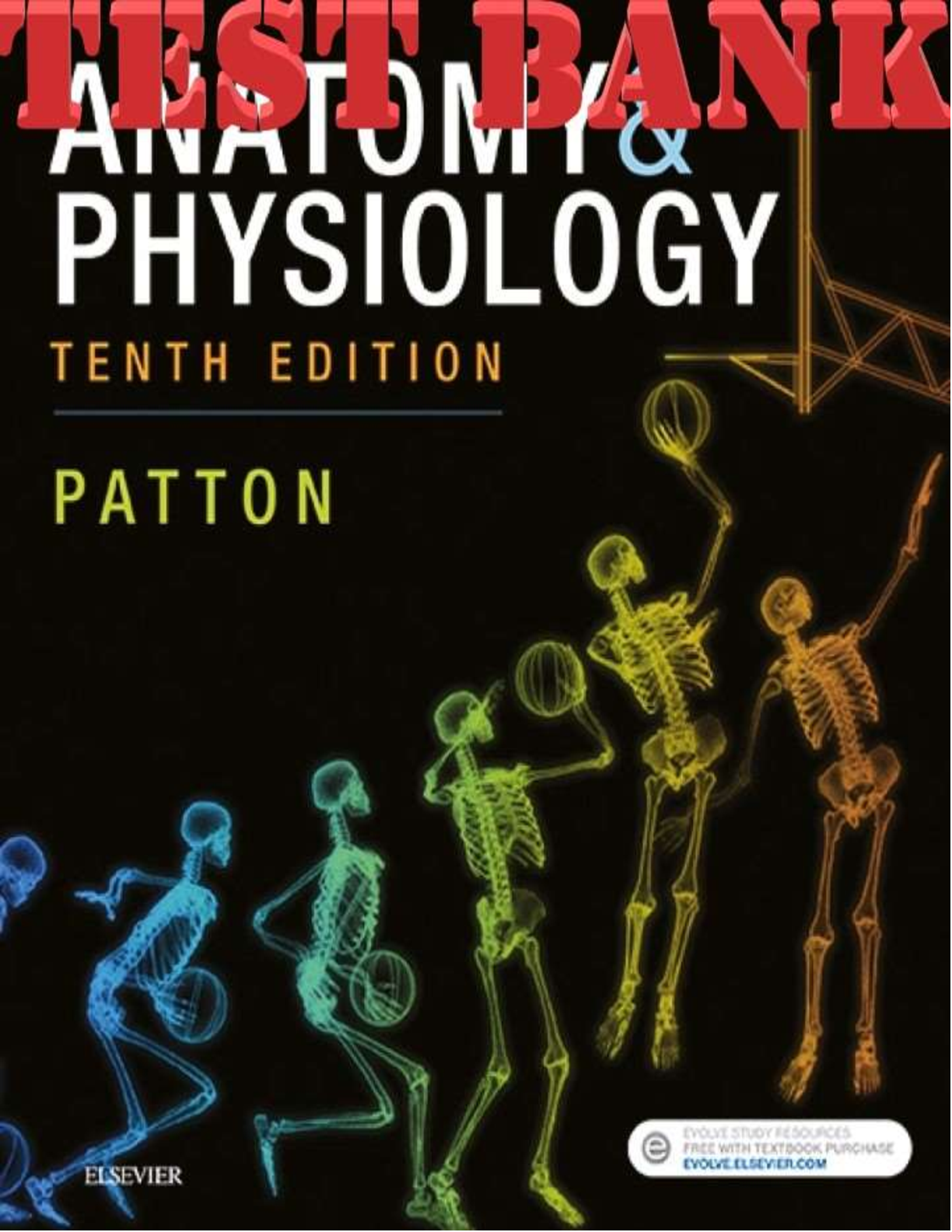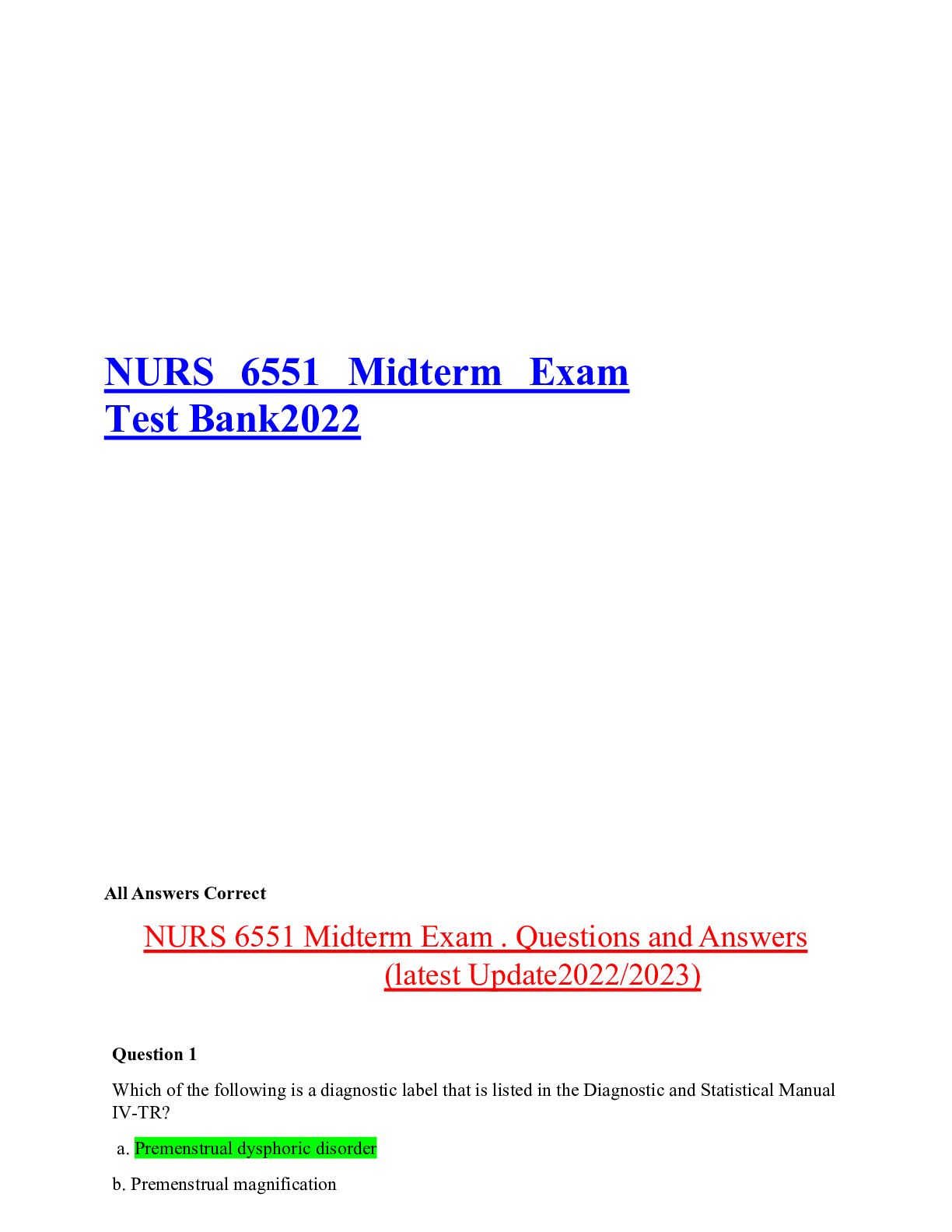*NURSING > TEST BANK > NURS 6551 Midterm Exam Test Bank/NURS 6551 Midterm Exam . Questions and Answers (Completed for 2022/ (All)
NURS 6551 Midterm Exam Test Bank/NURS 6551 Midterm Exam . Questions and Answers (Completed for 2022/2023)
Document Content and Description Below
NURS 6551 Midterm Exam Test Bank All Answers Correct NURS 6551 Midterm Exam . Questions and Answers (latest Update) Question 1 Which of the following is a diagnostic label that is listed in the D... iagnostic and Statistical Manual IV-TR? a. Premenstrual dysphoric disorder b. Premenstrual magnification c. Dysmenorrhea d. Premenstrual syndrome Question 2 About half of all pregnancies in the United States are unintended and occur most frequently in women who: a. Are married or divorced b. Have finished high school c. Are between the ages of 18 and 24 d. Are members of the majority group Question 3 What is one factor that can reduce the risk for the development of ovarian cancer? a. Multiple pregnancies b. Transvaginal ultrasounds c. Identification of recurrence d. Weight lossQuestion 4 What percentage of toxic shock syndrome cases are related to menses? a. 50% b. 25% c. 75% d. 90% 4. Which contraceptive methods have inherent failure rates? a. None b. Some c. All d. All except sterilization 5. Why do adolescents have the highest risk of developing pelvic inflammatory disease (PID)? a. They have the highest risk for bacterial vaginosis. b. They are the least at risk for developing other STIs. c. They are the most sexually active. d. They have decreased immunity to infectious organisms. 6. Exercise-induced amenorrhea is probably due to the combination of low body fat and decreased secretion of:a. Estrogen b. Prolactin c. Progesterone d. GnRH 7. What can result from an imbalance in the vaginal flora? a. Herpes simplex virus b. Human papillomavirus c. Chlamydia d. Bacterial vaginosis 8. The most effective means of obtaining the history of abuse is to use a communication model that: a. Avoids having the patient’s children present during the discussion b. Signals someone is interested and that the woman is not alone c. Emphasizes the belief that violence is not acceptable, no matter what the batterer might have said to the patient d. Allows the patient to talk without interruption and with time to relate, emphasize, and repeat her full story 9. What is the most common STI in the United States? a. Gonorrheab. Chlamydia c. Syphilis d. Herpes simplex virus Question 5 Tubal sterilization for women who have completed their families is highly effective, but there are disadvantages such as: a. Women are less likely to use condoms or return for health services. b. There is a decreased risk of ovarian cancer and pelvic inflammatory disease. c. There is a high likelihood of complications and side effects. d. The surgery is not covered by insurance. Question 6 Women who report experiencing the most severe symptoms of PMS tend to be: a. In their late 40s b. In their early 20s c. In their late teens d. In their late 30s Question 7 What is the definition of primary amenorrhea? a. The cessation of menses for an interval of 6 months b. The failure to begin menses by age 14 c. The cessation of menses due to outflow tract obstruction d. The failure to begin menses by age 16Question 8 How many stages does the Tanner scale use to stage sexual maturity? a. 3 stages b. 5 stages c. 6 stages d. 8 stages Question 9 Which contraceptive methods have inherent failure rates? a. None b. Some c. All d. All except sterilization Question 10 What is the most common type of menstrual dysfunction related to hyperandrogenism? a. Painful menstruation b. Absence of menses c. Irregular bleeding d. Early menopause Question 11 Combined oral contraceptives (COCs) are among the most extensively studied medications available. Which one of the following statements about their use has been found to be true? a. Broad-spectrum antibiotics may enhance their efficacy. b. They do not increase the risk of venous thromboembolism. c. They decrease the relative risk of ovarian and endometrial cancers. d. Among possible side effects are acne, hirsuitism, and benign breast conditions.Question 12 Many patients experiencing intimate partner violence (IPV) meet the criteria for diagnosing PTSD. Those criteria include all of the following except: a. Experiencing a traumatic event b. Re-experiencing the traumatic event c. Numbness and avoidance d. Hypovigilance Question 13 Which of the following is an ethical issue that is specifically associated with pre-implantation testing with ART? a. Ownership of frozen embryos after the couple has divorced b. A surrogate deciding she does not want to relinquish the infant c. Genetic engineering and the ability to reject embryos affected by inherited disorders d. The implantation of multiple embryos, which can create high risk for the embryos and the woman Question 14 The ________ is probably the most widely used intimate partner violence (IPV) screen. a. Three-QUESTION AAS (McFarlane et al., 1992) b. Campbell’s Danger Assessment (2003) c. Sheridan’s HARASS Instrument d. Helton’s nine-QUESTION AAS Question 15 What is the term for the absence of menses for 3 to 6 months in a woman who has previously menstruated and is not pregnant, breastfeeding, or menopausal? a. Primary amenorrhea b. Initial dysmenorrhea c. Secondary amenorrhead. Primary dysmenorrhea Question 16 Among women age 55 years and older: a. Macromastia is the most common cause of breast masses. b. Breast masses are presumed malignant until proven otherwise. c. Most breast masses decrease in size over time and many resolve completely. d. Diagnostic imaging of a breast mass and tissue sampling should be deferred. Question 17 Both very young and elderly sexual assault victims: a. Are addressed in most state mandatory reporting laws b. never has any difficulty describing the incident and related symptoms c. Require the same equipment for proper examination that others do d. Have fewer injuries than victims of other age groups Question 18 What is the major source of normal vaginal secretions? a. Bartholin’s glands b. Apocrine glands c. Sebaceous glands d. Cervical mucosa Question 19 Which one of the following statements about intimate partner violence (IPV) is false? a. It refers to an escalating pattern of abuse. b. It includes emotional abuse, such as disregarding what a woman wants. c. It includes using physical force to make a woman engage in a sexual act against her will.d. It refers to a current or former spouse or dating partner of the opposite sex, not someone of the same sex. Question 20 How is being overweight defined on the BMI table? a. 18–29.9 b. 20–29.9 c. 25–29.9 d. 30 or greater Question 27 All of the following diagnostic testing and procedures are now infrequently performed in clinical practice except: a. Hysterosalpingogram b. Sperm penetration assay c. The postcoital test (PCT) d. Endometrial biopsy (EMB) Question 28 The most common site for endometrial implants found in other parts of the body is: a. The appendix b. The uterus c. The ovaries d. The fallopian tubes Question 29Women who have had toxic shock syndrome should be instructed not to use tampons or: a. Barrier contraception methods b. Hormonal contraception methods c. Intravaginal antibiotic cream d. Oral antibiotics Question 30 Cyclic mastalgia: a. More likely causes unilateral, localized pain that is sharp or burning in nature b. Has an increased risk of occurrence in women whose diets are low in fat c. Occurs most frequently in women who are 18 to 30 years old d. Is caused by hormonal changes associated with menstruation Question 40 What is a common vasomotor symptom of menopause? a. Blood clots b. Night sweats c. Osteoporosis d. Hysterectomy Question 41 What is the best definition of abnormal uterine bleeding (AUB)? a. Uterine bleeding for which no pelvic pathology is found b. Uterine bleeding that is irregular during a woman’s menstrual cycle c. Uterine bleeding that is irregular in amount or frequency d. Uterine bleeding that is related to systemic conditionsQuestion 42 What should be the clinician’s first objective after learning the chief reason the woman desires care? a. To give the reason or problem a structural and chronological framework b. To probe for any additional concerns missed c. To take a family history related to the presenting concern d. To gain insight into the woman’s cultural and social influences Question 43 No risk factors other than age are identifiable in ______ of women with breast cancer. a. 100% b. 85% c. 60% d. 24% Question 44 The highest prevalence of human papillomavirus (HPV) is found among women ages: a. 18–20 b. 20–24 c. 25–30 d. 30–35 Question 45 Although barrier contraception methods are less effective in preventing pregnancy than more modern methods, interest in them is on the rise because they: a. Can help protect against STIs, including HIV b. Are coitus dependent and require planning c. Are nonallergenic and male controlled d. Involve the use of hormone1. How can liver and renal diseases result in abnormal uterine bleeding (AUB)? a. They cause an imbalance in platelet aggregation. b. They result in an inability to adequately clear estrogen from the body. c. They cause thyroid dysfunction, which leads to bleeding abnormalities. d. They result in elevated prolactin levels, which lead to bleeding abnormalities. 2. What is now thought to be the most important causative agent in cervical cancer? a. PCOS b. Vulvar cancer c. Herpes simplex d. HPV 3. An initial or primary genital herpes infection characteristically lasts about: a. 1 week b. 3 weeks c. 1 monthd. 6 weeks 10. Progestin-only pills (POPs): a. Have no possible side effects b. Suppress ovulation as reliably as COCs c. May be taken earlier or later than prescribed d. In combination with lactation are nearly 100% effective 11. According to the World Health Organization (WHO), the presence of a disease state: a. Necessitates prompt medical attention b. Excludes a person from being considered healthy c. Does not exclude a person from being considered healthy d. Classifies a person as in poor health 12. Which of the following might be a sign of hyperandrogenism? a. Irritable bowel syndrome b. Decreased sebum secretion in the skinc. Decreased muscle mass d. Acne associated with menstrual dysfunction 13. Surgical abortion represents an option for women who desire termination of pregnancy beyond: a. 8 weeks’ gestation b. 12 weeks’ gestation c. 4 weeks’ gestation d. 15 weeks’ gestation 14. How can weight loss specifically control symptoms of polycystic ovary syndrome (PCOS)? a. It decreases SHBG. b. It increases insulin resistance. c. It decreases androgen levels. d. It increases estrogen levels. 15. Why is acknowledging the oppression of women more difficult within Western societies?a. The multiplicity of minority groups complicates the issue. b. The availability of health care makes acknowledgment more difficult. c. The diversity of the news media clouds the issue. d. Affluence and increased opportunities mask oppression. 16. How does vaginosis differ from vaginitis? a. It must be treated with metronidazole. b. The discharge does not contain white blood cells. c. The discharge does not have an odor. d. It causes itching and/or burning. 17. What area of injury prevention is a focus of the USPSTF’s guidelines for counseling all healthy, asymptomatic women? a. Motor vehicle accidents b. Falls c. Domestic violence d. All of the above18. What approach does Healthy People 2020 use to achieve its goals and objectives? a. Social determinants of health b. Evidence-based determinants of health c. Quality-of-life determinants of health d. Longevity promotion determinants of health 19. Approximately what percentage of women with bacterial vaginosis are asymptomatic? a. 25% b. 40% c. 75% d. 50% 20. The genetic counselor has a significant role in the care of women because BRCA1 and BRCA2 genetic mutations account for 5 to 10 percent of all _______ cancer cases. a. Breast b. Ovarian c. Uterine d. Pancreatic 21. Which organism causes 90% of vulvovaginal candidiasis episodes in women? a. Candida tropicalisb. Candida albicans c. Candida glabrata d. Candida krusei 22. What term refers to the period from about 7 to 10 days before menstrual flow begins until the first or second day of menstrual flow? a. Amenorrhea b. Premenstrual c. Dysmenorrhea d. Perimenstrual 23. The ParaGard IUD is impregnated with copper and is effective for: a. 15 years b. 3 years c. 5 years d. 10 years 24. What is the danger of giving estrogen replacement therapy (ERT) to menopausal women with an intact uterus? a. A higher risk of heart disease b. An increased likelihood of blood clotsc. An increased likelihood of osteoporosis d. A higher risk of endometrial cancer 25. Although barrier contraception methods are less effective in preventing pregnancy than more modern methods, interest in them is on the rise because they: a. Can help protect against STIs, including HIV b. Are coitus dependent and require planning c. Are nonallergenic and male controlled d. Involve the use of hormones Question 32 2 out of 2 points What had been a significant problem in medical research well into the 1990s? Answer: B. The lack of representation of women in research trials Question 33 2 out of 2 points What has contributed to the decreased incidence of hepatitis B over the past 20 years? Answer: B. the HBV vaccination Question 34 2 out of 2 pointsMost research studies on methods of contraception use the term efficacy to refer to: Answer: B. The likelihood of pregnancy when a method is used exactly as prescribed Question 35 2 out of 2 points What is the USPSTF recommendation regarding firearms? Answer: C. Remove from home, or store unloaded in locked compartments Question 36 0 out of 2 points Who should be screened regularly for STIs? Answer: D. Women over the age of 15 Question 37 2 out of 2 points Gender is rooted in _____________ and shaped by ________________ . Answer: C. Biology, environment and experience Question 38 0 out of 2 points Surgical abortion represents an option for women who desire termination of pregnancy beyond: Answer: D. 15 weeks’ gestation Question 39 2 out of 2 pointsWhich of the following are screening tests for type 2 diabetes mellitus? Answer: D. All of the above Question 40 2 out of 2 points The depot medroxyprogesterone acetate (DMPA) injection (Depo-Provera) is given at _______ week intervals. Answer: D. 12 Question 41 2 out of 2 points What treatment was introduced in the 1990s as a less invasive alternative to hysterectomy? Answer: C. Endometrial ablation 26. A risk factor that could lead to endometrial cancer is: a. Early menopause b. Late menopause c. High blood pressure d. Cervical cancer 27. Of the two intrauterine contraceptive devices currently available in the United States only one provides a local delivery of protestin. It is the: a. Combined contraceptive patch (Ortho Evra) b. Copper IUD (T380A, ParaGard)c. LNG-IUS (Mirena) d. Dalkon Shield 28. Approximately what percentage of vulvar cancers occur in women older than the age of 50? a. 50% b. 70% c. 85% d. 60% 29. What is the best definition of abnormal uterine bleeding (AUB)? a. Uterine bleeding for which no pelvic pathology is found b. Uterine bleeding that is irregular during a woman’s menstrual cycle c. Uterine bleeding that is irregular in amount or frequency d. Uterine bleeding that is related to systemic conditions 30. The most common benign breast masses are: a. Galactoceles b. Hamartomas c. Fibroadenomas and cystsd. Lipomas and phyllodes tumors 31. Which cancer has the highest mortality rate of all gynecological cancers? a. Vulvar cancer b. Endometrial cancer c. Cervical cancer d. Ovarian cancer 32. Vulvovaginal candidiasis accounts for what percentage of all vaginal infections? A. 10–15% B. 20–25% C. 50–55% D. 60–65% 33. Which type of counseling results in a statistically significant reduction in STIs? a. Abstinence-only education b. Counseling delivered in multiple individual or group sessions totaling more than 3 hours c. Remote counseling via Internet or phone d. Brief, individual sessions in the primary care setting34. Which of the following is an ethical issue that is specifically associated with pre-implantation testing with ART? a. Ownership of frozen embryos after the couple has divorced b. A surrogate deciding she does not want to relinquish the infant c. Genetic engineering and the ability to reject embryos affected by inherited disorders d. The implantation of multiple embryos, which can create high risk for the embryos and the woman Question 21 What has contributed to the decreased incidence of hepatitis B over the past 20 years? a. The decrease in PID b. The HBV vaccination c. The increase in condom use d. More precise screening methods Question 22 Which are the most common forms of hepatitis seen in women’s health practices? a. A and B b. A and D c. B, C, and D d. B and C Question 23 The factors that enable women to enjoy and control their sexual and reproductive lives, including a physical and emotional state of well-being and the quality of sexual and other close relationships, make up a woman’s: 1. 2. a. Sexual healthb. Gender identity c. Gender role behaviors d. Psychosocial orientation Question 24 What test should be ordered for a woman who is experiencing abnormal uterine bleeding (AUB) as well as headaches and peripheral vision changes? a. Thyroid-stimulating hormone test b. Nucleic acid amplification test c. Complete blood count d. Prolactin level test Question 25 Surgical abortion represents an option for women who desire termination of pregnancy beyond: a. 8 weeks’ gestation b. 12 weeks’ gestation c. 4 weeks’ gestation d. 15 weeks’ gestation Question 26 What Population of women should be screened for signs and symptoms of thyroid dysfunction? a. All women b. Older women c. Older women, smokers, and women with diabetes d. Older women, postpartum women, and women with Down syndrome35. What symptom is present in 80 to 90 percent of women with cervical cancer? a. Abnormal vaginal bleeding b. Abnormal vaginal discharge c. Pelvic pain d. Ectopic pregnancy 36. If a patient has not reported a sexual assault to law enforcement, all of the following clinician actions are important except: a. Asking if reporting is something she wants to consider b. Discussing any fears or concerns that she may have about reporting c. Explaining that only some forced sexual contacts are reportable crimes d. Telling her that women who report do better psychologically than those who do not 37. What test should be ordered for a woman who is experiencing abnormal uterine bleeding (AUB) as well as headaches and peripheral vision changes? a. Thyroid-stimulating hormone test b. Nucleic acid amplification test c. Complete blood count d. Prolactin level test38. What had been a significant problem in medical research well into the 1990s? a. The focus on randomized clinical trials over epidemiological investigations b. The lack of representation of women in research trials c. The lack of research related to gynecology d. The focus on randomized clinical trials over observational research 39. What is the definitive diagnostic technique for vulvar dermatoses? a. Pap test b. Biopsy c. Colposcopy d. Physical exam 40. Where in the breast do most malignancies develop? a. Upper inner quadrant b. Upper outer quadrant c. Lower outer quadrant d. Lower inner quadrant 41. Approximately how many Americans will contract one or more sexually transmitted infections during their lifetime? a. 50%b. 25% c. 40% d. 60% 42. In the GTPAL system for recording pregnancy history, the ―T‖ stands for: a. Term births b. Terminal pregnancies c. Total number of pregnancies d. Type of birth (spontaneous, assisted, or cesarean) 43. Both very young and elderly sexual assault victims: a. Are addressed in most state mandatory reporting laws b. never has any difficulty describing the incident and related symptoms c. Require the same equipment for proper examination that others do d. Have fewer injuries than victims of other age groups 44. What is one of the side effects of hormonal contraceptives? a. Reduction in ovarian cancer risk b. Increased menstrual blood lossc. Increased risk of endometrial cancer d. Heavier menstrual flow 45. Tubal sterilization for women who have completed their families is highly effective, but there are disadvantages such as: a. Women are less likely to use condoms or return for health services. b. There is a decreased risk of ovarian cancer and pelvic inflammatory disease. c. There is a high likelihood of complications and side effects. d. The surgery is not covered by insurance. 46. What is the current (2006) recommendation by the CDC regarding HIV testing? a. Test all patients who report risk behaviors associated with HIV. b. Test all patients unless they explicitly decline to be tested. c. Test all patients. d. Test only those patients who ask to be tested. 47. What is generally the cause of Bartholin’s cyst? a. Complications from gonorrhea b. Cystic fluid in Bartholin’s gland becomes infected c. A fungal infection in Bartholin’s glandd. Obstruction of a duct in Bartholin’s gland 48. Which of the following factors associated with increased risk for developing osteoporosis appears to be the best predictor of risk? a. Smoking b. Low body weight c. Sedentary lifestyle d. Family history 49. What is the definition of primary amenorrhea? a. The cessation of menses for an interval of 6 months b. The failure to begin menses by age 14 c. The cessation of menses due to outflow tract obstruction d. The failure to begin menses by age 16 50. In respect to an evidentiary examination: a. The patient may not withhold consent if the clinician is a mandated reporter. b. The clinician is required to strictly follow local agency protocols, no others. c. The time frame within which it must take place depends on local standards. d. Maintaining the chain of custody of all evidence collected is recommended, notrequired. Question 1 2 out of 2 points Cyclic mastalgia: Answer: D. is caused by hormonal changes associated with menstruation Question 2 2 out of 2 points The possibility of cancer is associated with mastalgia when the pain: Answer: B. is accompanied by skin changes or palpable abnormality Question 3 2 out of 2 points Why is adenomyosis frequently underdiagnosed? Answer: D. It has similar symptoms to other pelvic pain conditions. Question 4 2 out of 2 points What is the current (2006) recommendation by the CDC regarding HIV testing? Answer: B. Test all patients unless they explicitly decline to be tested. Question 52 out of 2 points What is the most common type of menstrual dysfunction related to hyperandrogenism? Answer: C. Irregular bleeding Question 6 2 out of 2 points Which one of the following statements about the subdermal progestin implant is false? Answer: B. After removal, its contraceptive effects last 10 more months on average. Question 7 2 out of 2 points What is the most common symptom of vulvovaginal candidiasis? Answer: D. Vulvar pruritis Question 8 2 out of 2 points What is the major source of normal vaginal secretions? Answer: D. Cervical mucosa Question 9 2 out of 2 points Which of the following is an ethical issue that is specifically associated with pre-implantation testing with ART? Answer: C. Genetic engineering and the ability to reject embryos affected by inherited disordersQuestion 10 2 out of 2 points The most common sites of metastatic spread of invasive breast cancer include all of the following except: Answer: C. Pituitary Question 11 0 out of 2 points Women’s health risks, treatments, and approaches are not always based in science and biology because: Answer: D. Scientific research often fails to take women into consideration. Question 12 2 out of 2 points Under what conditions is a rectovaginal examination most useful? Answer: D. if the uterus is retroflexed or retroverted Question 13 2 out of 2 points The methods of abortion used in the United States—in order, with the most common method listed first—are: Answer: A. Aspiration, medication, induction, surgical Question 142 out of 2 points Hyperandrogenism in reproductive-age women is most frequently associated with: Answer: B. Polycystic ovary syndrome Question 15 2 out of 2 points There is no one legal definition of rape, which means: Answer: A. Clinicians must learn their own state’s definitions and statutes. Question 16 2 out of 2 points In the GTPAL system for recording pregnancy history, the ―T‖ stands for: Answer: A. Term births Question 17 0 out of 2 points How can liver and renal diseases result in abnormal uterine bleeding (AUB)? Answer: A. they cause an imbalance in platelet aggregation. Question 18 2 out of 2 points The second most commonly reported STI after chlamydia is: Answer: A. GonorrheaQuestion 19 0 out of 2 points The most common site for endometrial implants found in other parts of the body is: Answer: D. the fallopian tubes Question 20 2 out of 2 points What procedure is used to evaluate abnormal Pap smears and genital tract lesions? Answer: A. Colposcopy Question 21 2 out of 2 points The most widely accepted theory for the origin of endometriosis is that reverse flow of menses out of the fallopian tubes allows endometrial cells to enter the pelvis and become implanted on the pelvic organs, which is the: Answer: B. Retrograde menstruation theory Question 22 2 out of 2 points What should be the clinician’s first objective after learning the chief reason the woman desires care? Answer: A. to give the reason or problem a structural and chronological framework Question 232 out of 2 points Although barrier contraception methods are less effective in preventing pregnancy than more modern methods, interest in them is on the rise because they: Answer: A. Can help protect against STIs, including HIV Question 24 2 out of 2 points The ________ is probably the most widely used intimate partner violence (IPV) screen. Answer: A. Three-question AAS (McFarlane et al., 1992) Question 25 2 out of 2 points What symptom is present in 80 to 90 percent of women with cervical cancer? Answer: A. Abnormal vaginal bleeding Question 26 2 out of 2 points Why do adolescents have the highest risk of developing pelvic inflammatory disease (PID)? Answer: D. they have decreased immunity to infectious organisms. Question 31 The incidence of uterine fibroids: a. Increases with age b. Decreases with age c. Is often caused by early menopaused. Is related to the age of first menses Question 32 Patients presenting for STI treatment should be screened for HIV: a. At each visit b. At the end of treatment c. At the beginning of treatment d. Each year Question 33 What screening recommendation is similar across all groups for colorectal cancer? a. Screening women age 76 to 85 based on risk factors b. Screening only for those women at increased risk c. Screening for all women starting at age 50 d. 13. Against routine screening in adults age 76 and over Question 34 Approximately what percentage of vulvar cancers occur in women older than the age of 50? a. 50% b. 70% c. 85% d. 60% Question 35 Signs of endometrial or cervical cancer may present abnormal uterine bleeding, often as heavy, prolonged bleeding or: a. Menometrorrhagia b. Amenorrhea c. Oligomenorrhead. Polymenorrhea Question 36 In the GTPAL system for recording pregnancy history, the ―T‖ stands for: a. Term births b. Terminal pregnancies c. Total number of pregnancies d. Type of birth (spontaneous, assisted, or cesarean) Question 37 What is now thought to be the most important causative agent in cervical cancer? a. PCOS b. Vulvar cancer c. Herpes simplex d. HPV Question 38 The most common sites of metastatic spread of invasive breast cancer include all of the following except: a. Bones b. Lungs c. Pituitary d. Lymph nodes Question 39 Who should be screened regularly for STIs? a. Women who have more than one sexual partner b. Women over the age of 21 c. Women who are sexually active d. Women over the age of 15Question 27 2 out of 2 points What is the screening recommendation by the American College of Obstetricians and Gynecologists for intimate partner violence (IPV)? Answer: A. routinely ask all women direct, specific questions about abuse. Refer to communitybased services when identified. Question 28 2 out of 2 points The genetic counselor has a significant role in the care of women because BRCA1 and BRCA2 genetic mutations account for 5 to 10 percent of all _______ cancer cases. Answer: A. Breast Question 29 2 out of 2 points A first-line recommended treatment for women with polycystic ovary syndrome (PCOS) is: Answer: D. Combined oral contraceptives Question 30 2 out of 2 points Research has demonstrated that emergency contraception pills are approximately 74 percent effective when taken as long as: Answer: B. 120 hours after unprotected sexual intercourse Question 31 2 out of 2 pointsWhich of the following is a preventive measure for vulvar cancer? Answer: B. Not smoking Question 42 0 out of 2 points Exercise-induced amenorrhea is probably due to the combination of low body fat and decreased secretion of: Answer: A. Estrogen Question 43 2 out of 2 points Alcohol consumption is considered hazardous for a woman who has: Answer: B. Either 7 or more drinks in one week or 3 per occasion Question 44 2 out of 2 points Routine HPV vaccination is recommended for girls of what age? Answer: D. 11–12 Question 45 2 out of 2 points How is screening for the rubella immunity accomplished? Answer: B. By obtaining a history of vaccination or by ordering serologic studiesQuestion 46 2 out of 2 points Patients presenting for STI treatment should be screened for HIV: Answer: A. At each visit Question 47 2 out of 2 points What is one of the most frequent reasons women visit their clinician? Answer: A. Changes in menstruation Question 48 2 out of 2 points Which one of the following statements about intimate partner violence (IPV) during pregnancy is false? Answer: B. Complications are more the result of trauma than psychological abuse. Question 49 2 out of 2 points The factors that enable women to enjoy and control their sexual and reproductive lives, including a physical and emotional state of well-being and the quality of sexual and other close relationships, make up a woman’s: Answer: A. Sexual health Question 50 2 out of 2 points What is one of the side effects of hormonal contraceptives? Answer: A. Reduction in ovarian cancer riskQuestion 51 0 out of 0 points When completing this quiz, did you comply with Walden University’s Code of Conduct including the expectations for academic integrity? Answer: Yes Sunday, July 7, 2019 5:23:21 PM EDT [Show More]
Last updated: 2 years ago
Preview 1 out of 40 pages

Buy this document to get the full access instantly
Instant Download Access after purchase
Buy NowInstant download
We Accept:

Reviews( 0 )
$13.00
Can't find what you want? Try our AI powered Search
Document information
Connected school, study & course
About the document
Uploaded On
Jan 27, 2021
Number of pages
40
Written in
Additional information
This document has been written for:
Uploaded
Jan 27, 2021
Downloads
0
Views
93


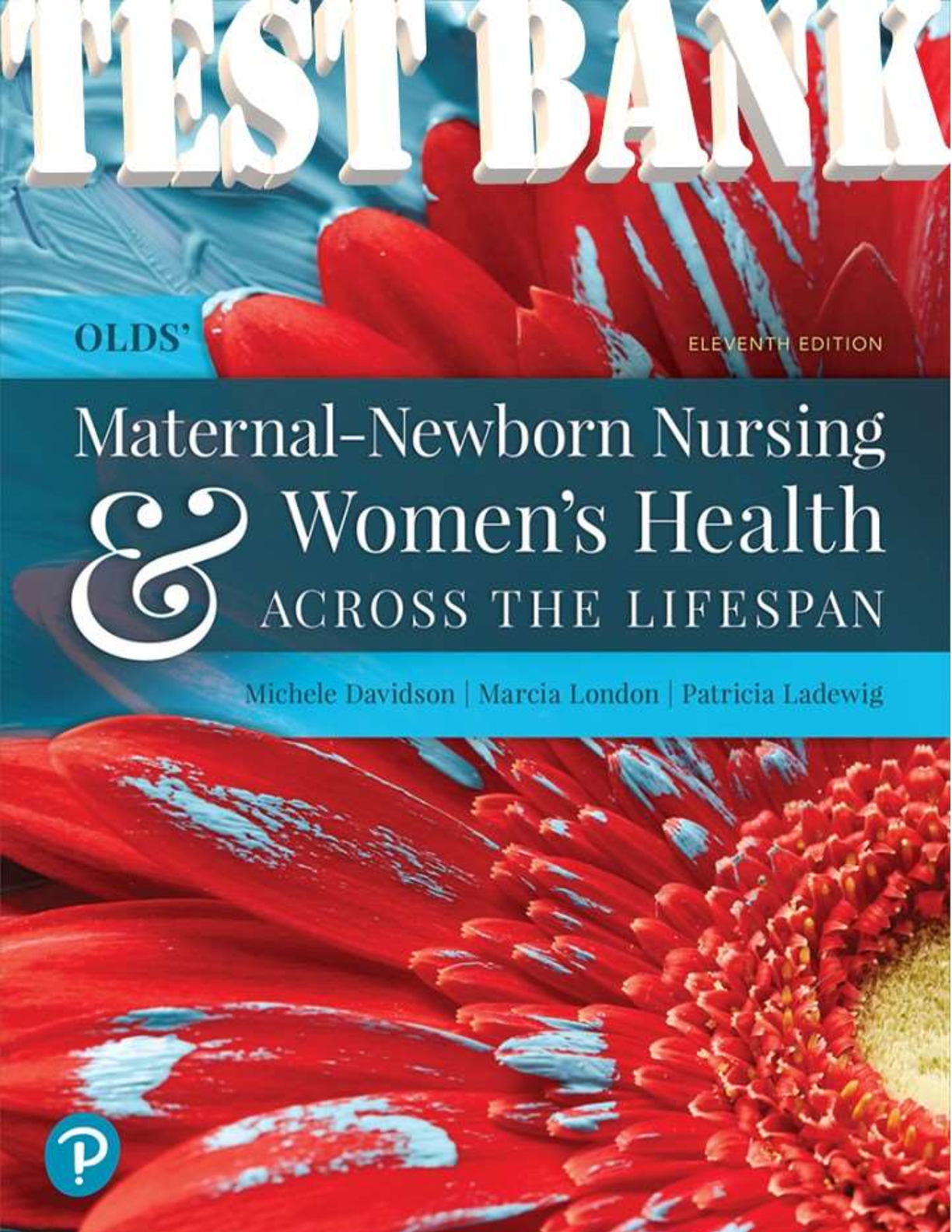
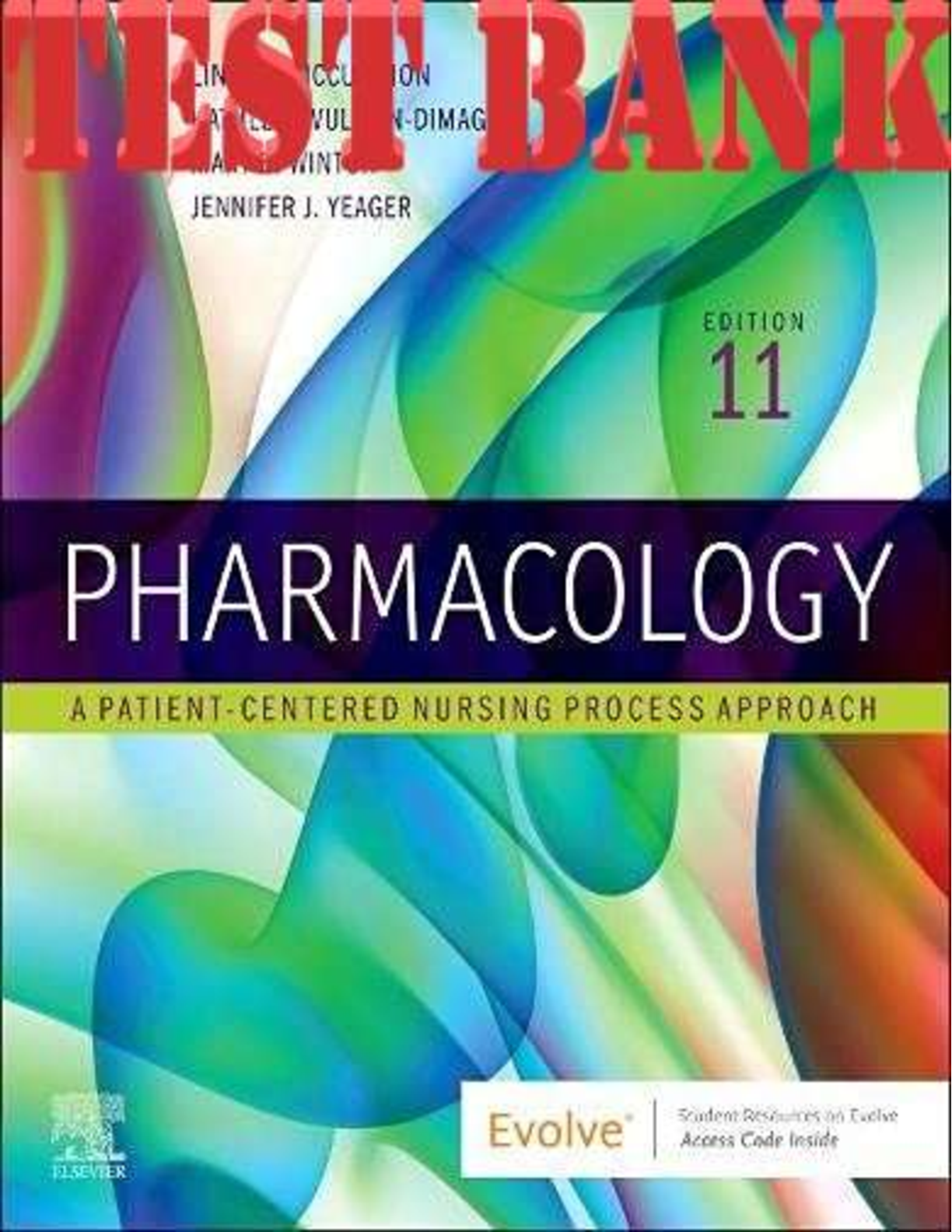

 (Diane Pacitti etc.png)




